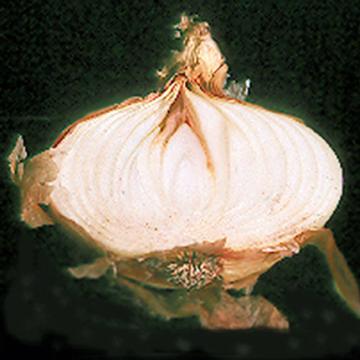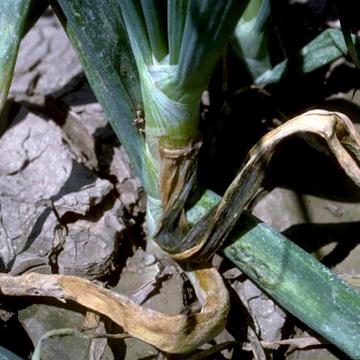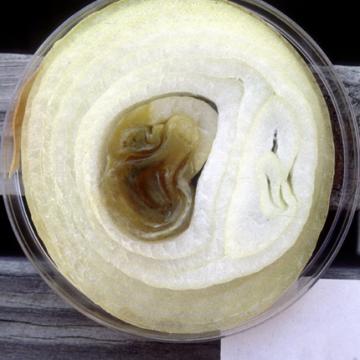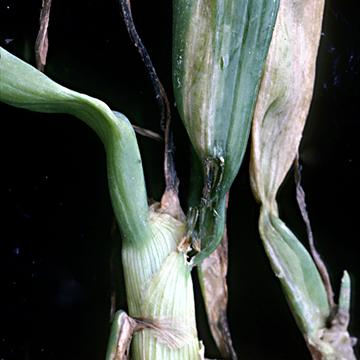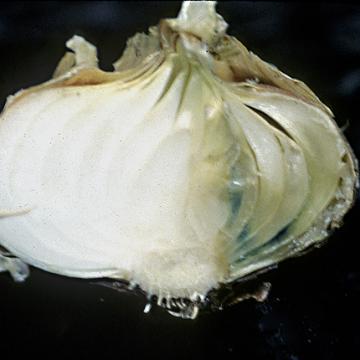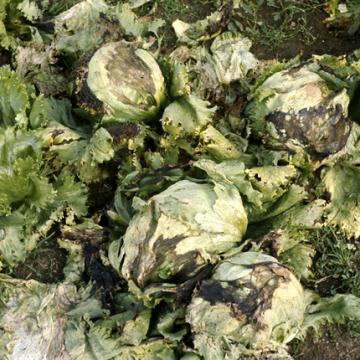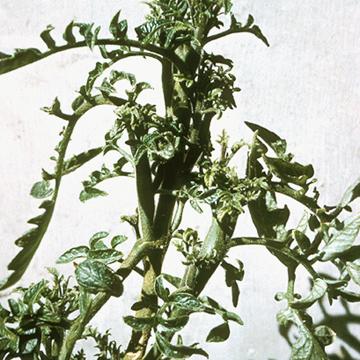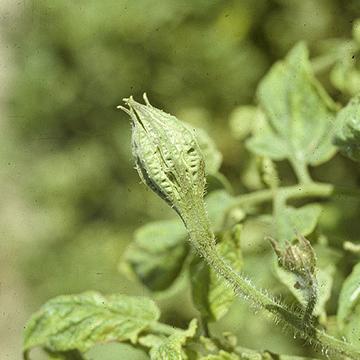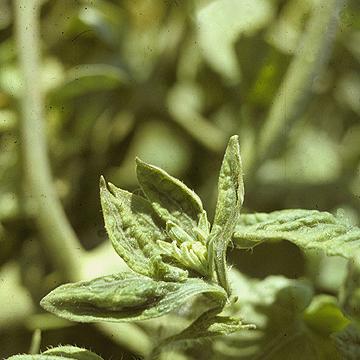DISEASE: Bacterial leaf streak and bulb rot
HOST: Onion
The disease is characterized by dark spots on wrapper scales and/or reddish brown discoloration of inner scales.
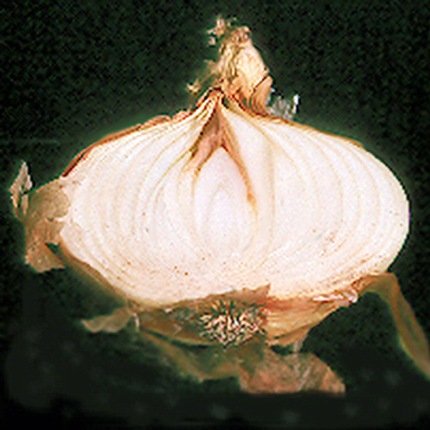
Bacterial leaf streak and bulb rot | Onion
DISEASE: Bacterial leaf streak and bulb rot
HOST: Onion (Allium cepa)
PATHOGEN: Pseudomonas viridiflava
SOURCE: R. Gitaitis
DISEASE: Bacterial leaf streak and bulb rot
HOST: Onion
Onion with dead and rotted leaf at base of stem. Typical symptoms are water-soaked, dark green lesions that become oval with time, along with streaks and tipburn.
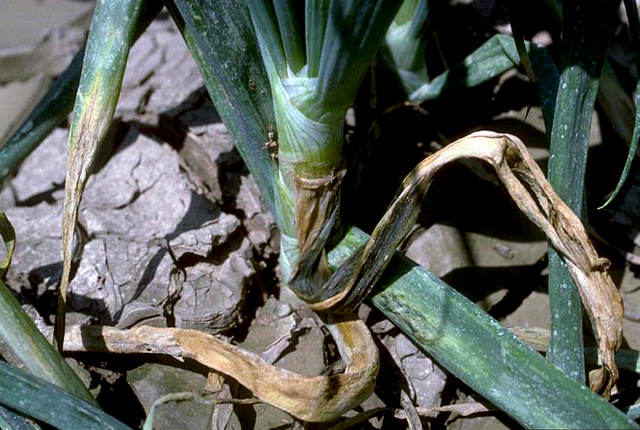
Bacterial leaf streak and bulb rot | Onion
DISEASE: Bacterial leaf streak and bulb rot
HOST: Onion (Allium cepa)
PATHOGEN: Pseudomonas viridiflava
SOURCE: H. Schwartz
DISEASE: Bacterial leaf streak and bulb rot
HOST: Onion
Browning and decay of bulb following inoculation with Pseudomonas viridiflava.
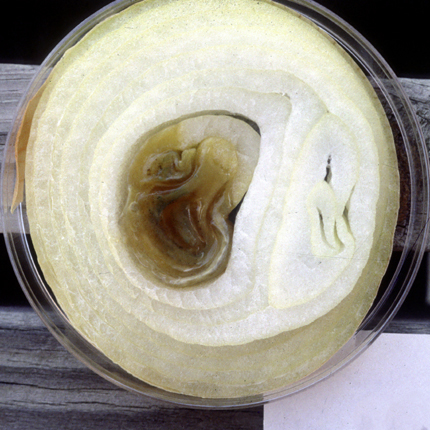
Bacterial leaf streak and bulb rot | Onion
DISEASE: Bacterial leaf streak and bulb rot
HOST: Onion (Allium cepa)
PATHOGEN: Pseudomonas viridiflava
SOURCE: R. Gitaitis
DISEASE: Bacterial leaf streak and bulb rot
HOST: Onion
Close-up of diseased leaves.
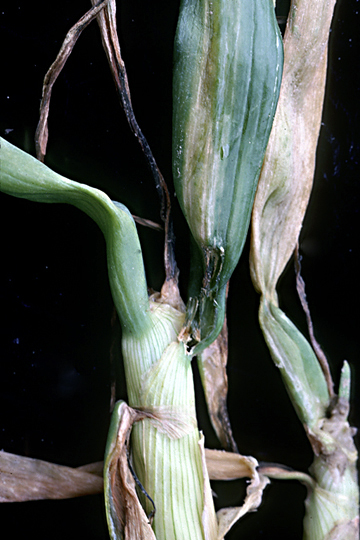
Bacterial leaf streak and bulb rot | Onion
DISEASE: Bacterial leaf streak and bulb rot
HOST: Onion (Allium cepa)
PATHOGEN: Pseudomonas viridiflava
SOURCE: R. Gitaitis
DISEASE: Bacterial leaf streak and bulb rot
HOST: Onion
Bulb rot with gray, bluish symptoms. Reddish brown discolorations also may occur.
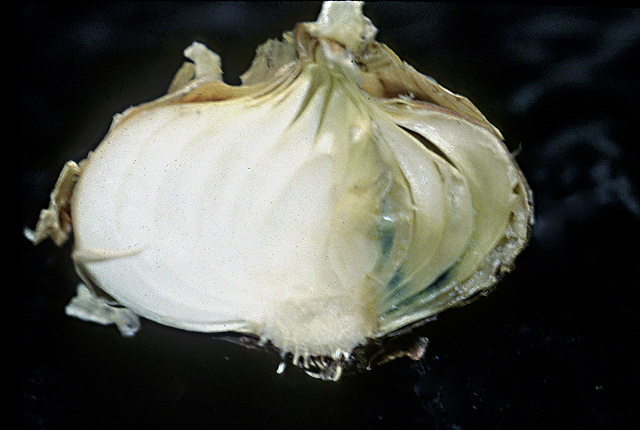
Bacterial leaf streak and bulb rot | Onion
DISEASE: Bacterial leaf streak and bulb rot
HOST: Onion (Allium cepa)
PATHOGEN: Pseudomonas viridiflava
SOURCE: R. Gitaitis
DISEASE: Marginal leaf blight
HOST: Lettuce
Marginal leaf blight first appears as slimy wilting of leaf margins. Small, reddish lesions may be seen on leaf blades. Infected tissues turn brown to black in time.
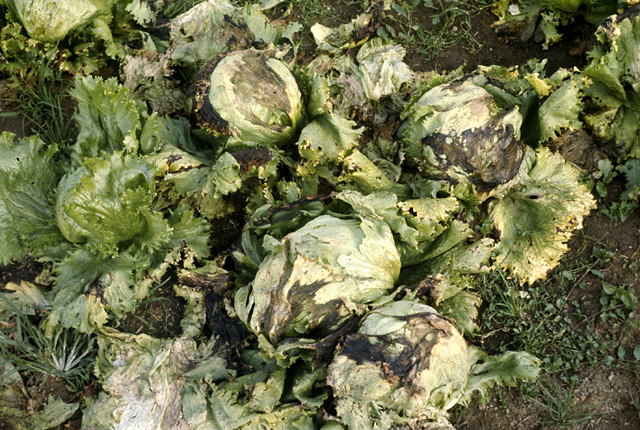
Marginal leaf blight | Lettuce
DISEASE: Marginal leaf blight
HOST: Lettuce (Lactuca sativa)
PATHOGEN: Pseudomonas marginalis
SOURCE: L. Fucikovsky
DISEASE: Tomato big bud
HOST: Tomato
Characteristic symptoms are swollen, apical stems and stunted leaves. Apical stems are generally thickened and assume a stiff and erect growth habit. Internodes are shortened and flower buds are greatly enlarged.
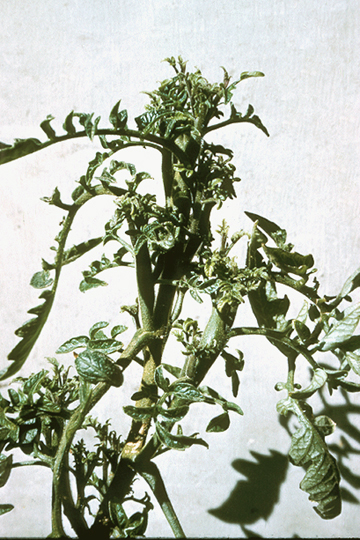
Tomato big bud | Tomato
DISEASE: Tomato big bud
HOST: Tomato (Lycopersicon esculentum)
PATHOGEN: 'Candidatus Phytoplasma asteris'
PATHOGEN SYNONYM: Phytoplasma Aster yellows group
SOURCE: D. Teakle
DISEASE: Tomato big bud
HOST: Tomato
Symptoms are enlarge sepals that do not separate. Flower buds stay green and do not develop into fruit. Leaves are small and chlorotic.
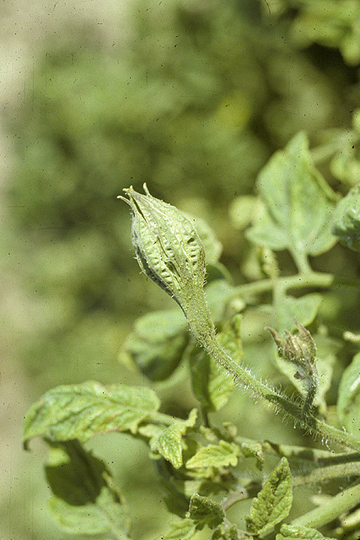
Tomato big bud | Tomato
DISEASE: Tomato big bud
HOST: Tomato (Lycopersicon esculentum)
PATHOGEN: 'Candidatus Phytoplasma asteris'
PATHOGEN SYNONYM: Phytoplasma Aster yellows group
SOURCE: S. Thomson
DISEASE: Tomato big bud
HOST: Tomato
Abnormal flower bud with greatly enlarged sepals. Sepals do not separate, fruit is not produced, and apical growth is upright.
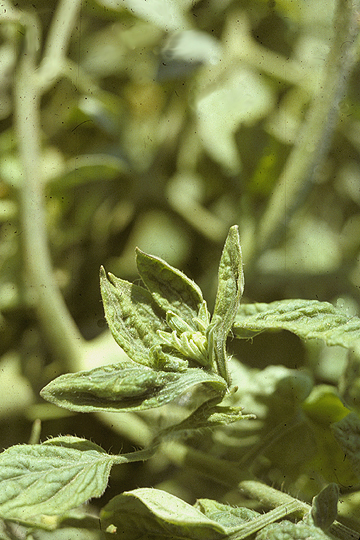
Tomato big bud | Tomato
DISEASE: Tomato big bud
HOST: Tomato (Lycopersicon esculentum)
PATHOGEN: 'Candidatus Phytoplasma asteris'
PATHOGEN SYNONYM: Phytoplasma Aster yellows group
SOURCE: S. Thomson


